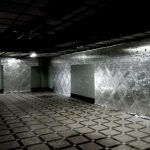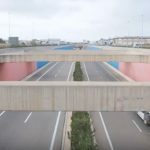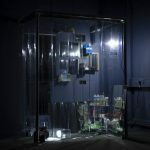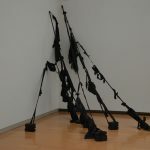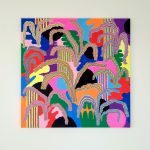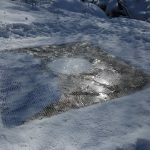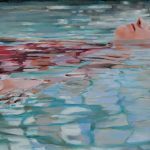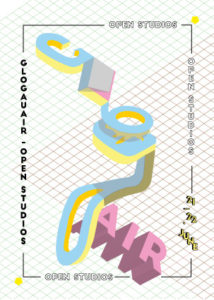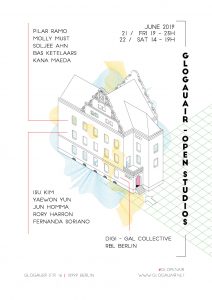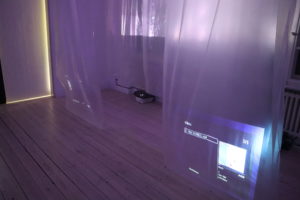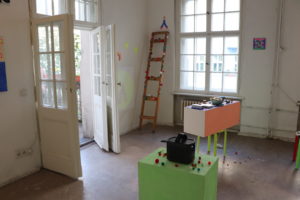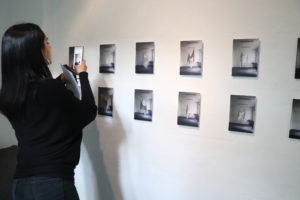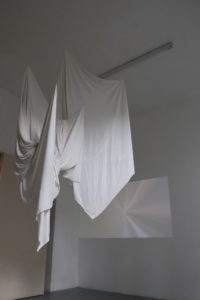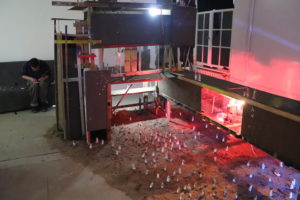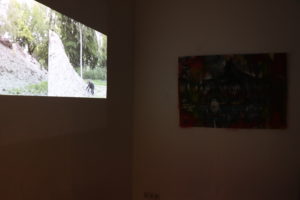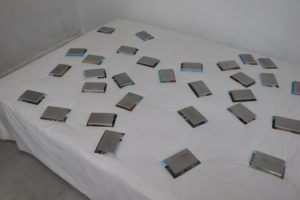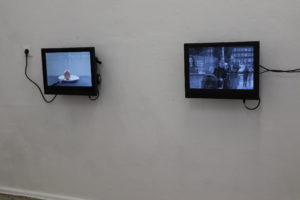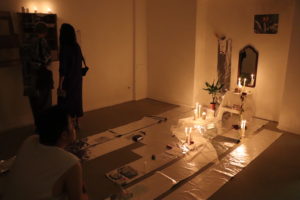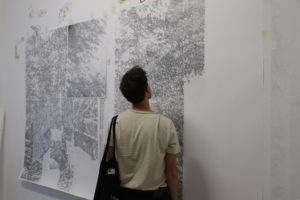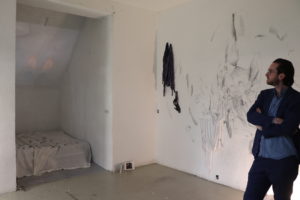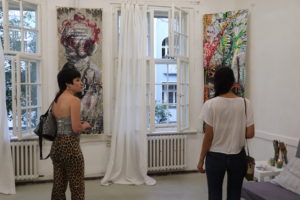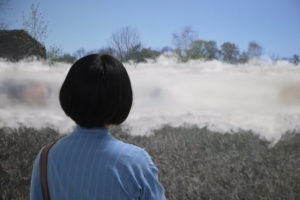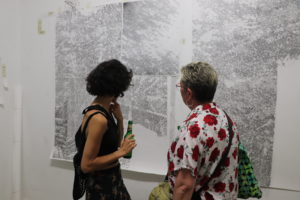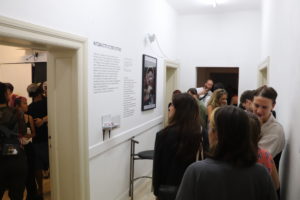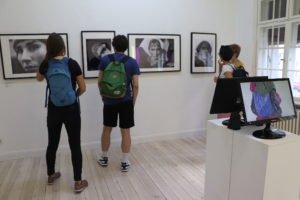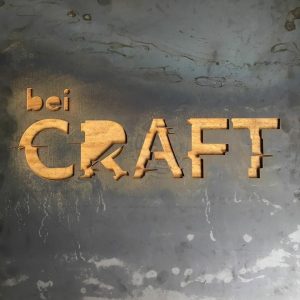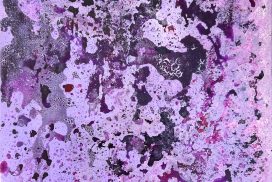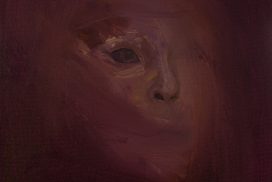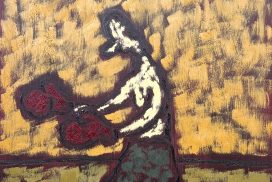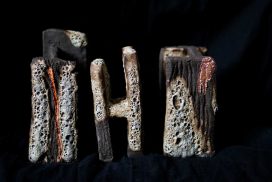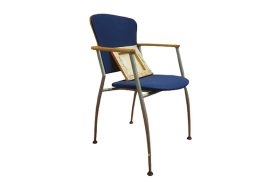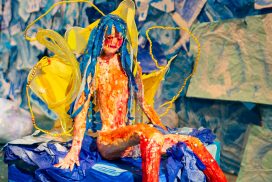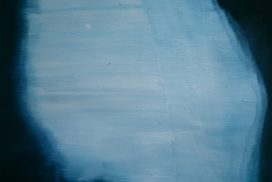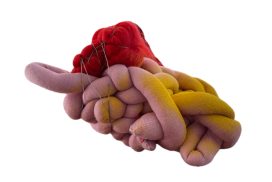Beginning on the first floor, Isu Kim finds small and fragile things that are filled with joy and act as solidarity against constant confrontation, violence and crisis. Yaewon Yun creates paintings through a process of intimacy—translating and layering personal experiences, memories and instinctive emotions into painterly and gestural reflections. With different techniques and materials Jun Homma makes us reflect on the fleeting look of our environment as interferes with the current landscapes by shooting photographs that make elements of the site anonymous or invisible to us. Rory Harron creates parallel worlds where he strives to illuminate on societal phenomena to empower people to contribute to change. By observing the physical form of fabric, Fernanda Soriano approaches the material and transforms it into an emotional and poetic form of being across mediums and seemingly stopped in time.
Traveling upstairs to the second floor studios, the work of Spanish filmmkaer Pilar Ramo combines research, reflection, and close personal contact with individuals with migration experience inviting viewers to reflect about the hidden effects of the global market through images in split screens, voices, and texts. Molly Must uses cartographic symbolism and figurative allegory in seeking a framework of motifs that reflect her musings and anxieties about inherited geographies of everyday imperialism. Audiences can involve themselves directly by entering Sol Jee Ahn’s personal space—the artist’s studio transformed into cinematic installation—and experience being an intruder and objectified ‘body’. With the tradition of romantic landscape painting in mind, Bas Ketelaars starts with his own experience from walks trough empty landscapes and translates this experience in objects to be contemplated. Kana Maeda has collected old abandoned clothing from the streets in Berlin and has created small sculptures out of them touching people’s skin. As a foreigner in Berlin, she reflects on how she can relate to this new environment.


